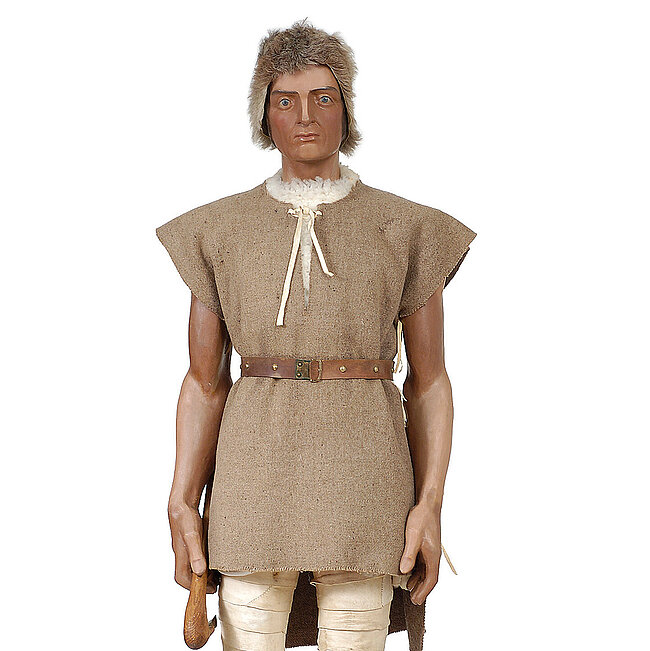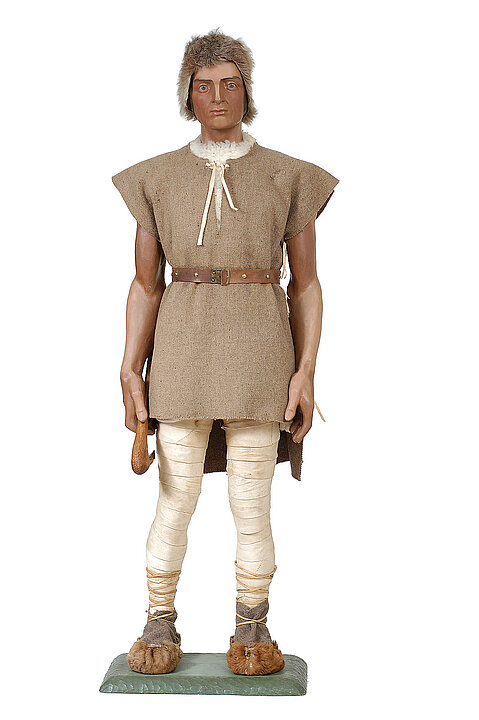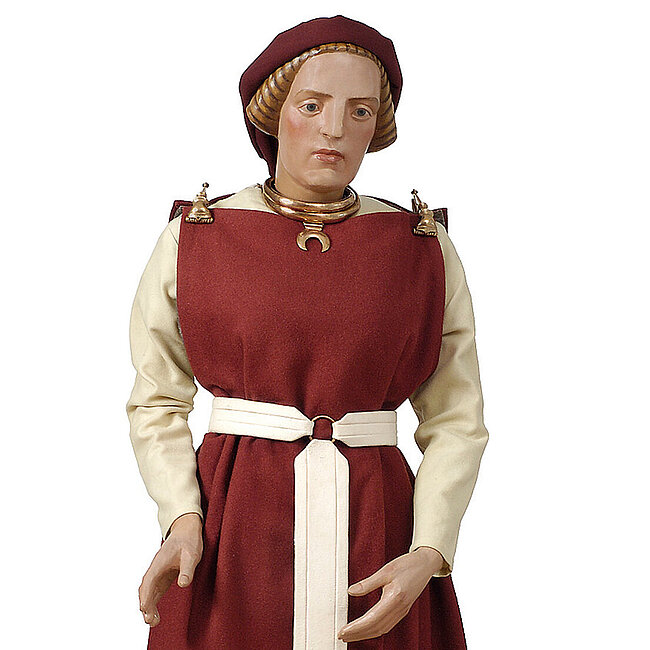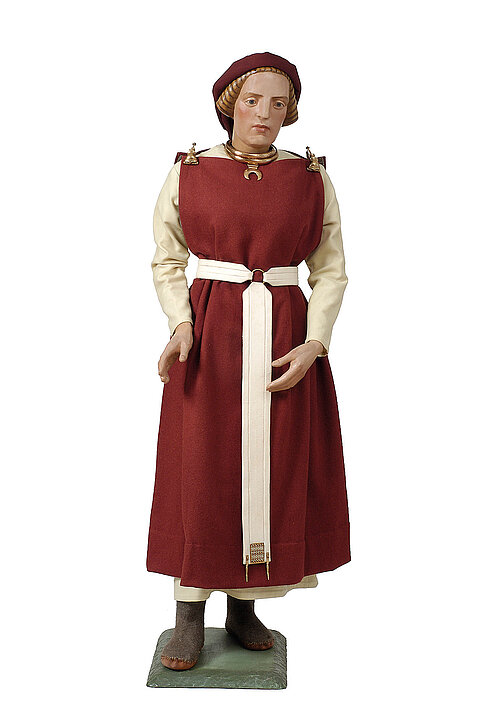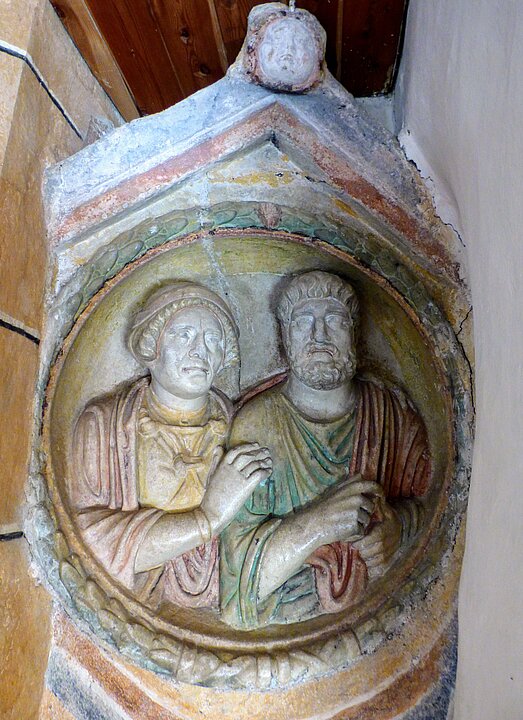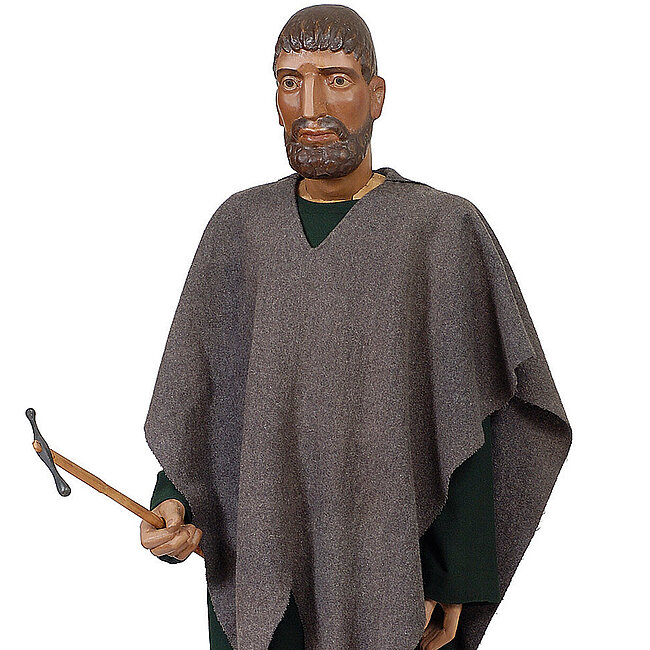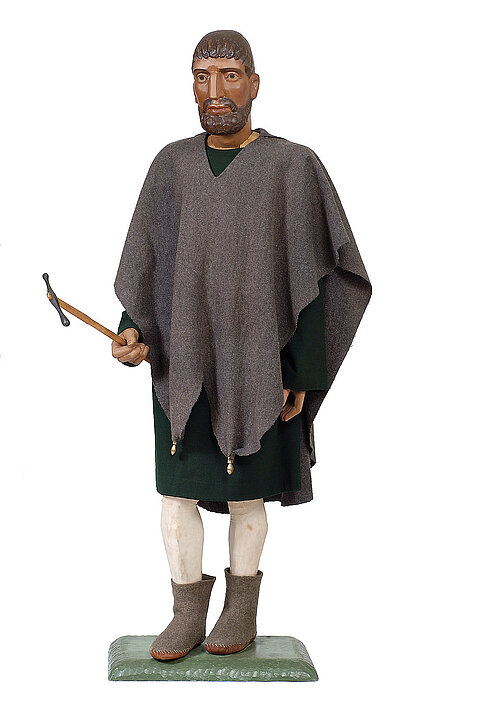Why does the story in the Trachtensaal begin with a figure from the Hallstatt period?
The Hallstatt period is the older Iron Age from about 800 to 480 BCE, which developed in the Alpine region from the Urnfield culture. Around 1874, the Swedish prehistorian Hans Hildebrand had introduced the term and proposed distinguishing two cultures within the Iron Age, namely the Hallstatt and the Latène periods. With the Hallstatt Miner, Viktor Geramb was not only paying tribute to the Salzkammergut, but also to iron, a material that had always been important for Styria.
The chest band made of fur, the leg wrappings, leather straps and the wrapped shoes for the miner had been recreated by Geramb on the basis of historical texts and visual sources, and the goatskin cap corresponds to Iron Age finds at the Dürrnberg salt mine near Hallein. The folklorist described the wrapped shoes in detail in the Book of Styrian Tracht. For him, shoes were a fundamental component of ‘Tracht-like clothing’. Initially, the figurine also wore a poncho-like cape.
How would this figure be dressed today?
Archaeologists today would generally reconstruct a longer tunic, based on scenic representations on bronze vessels. The figure would also have longer sleeves, as a sleeve trim was found in the Hallstatt mine. There is no evidence for chest bands made of fur. Colours are visible in many textile finds from Hallstatt, so a reconstruction today would also be more colourful.



















